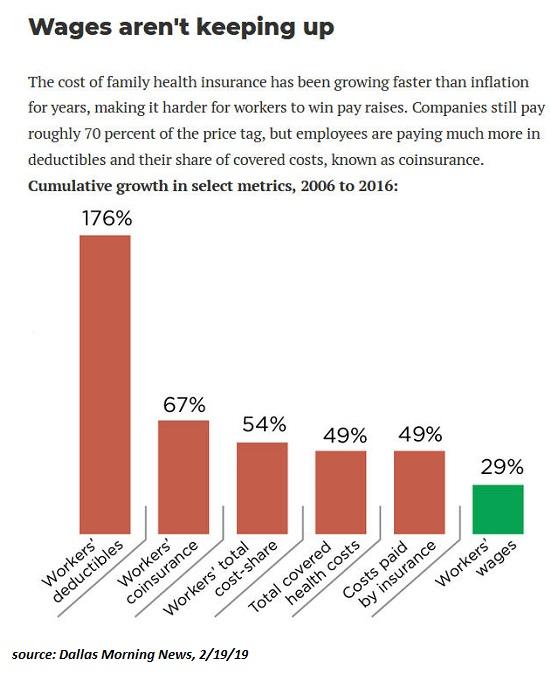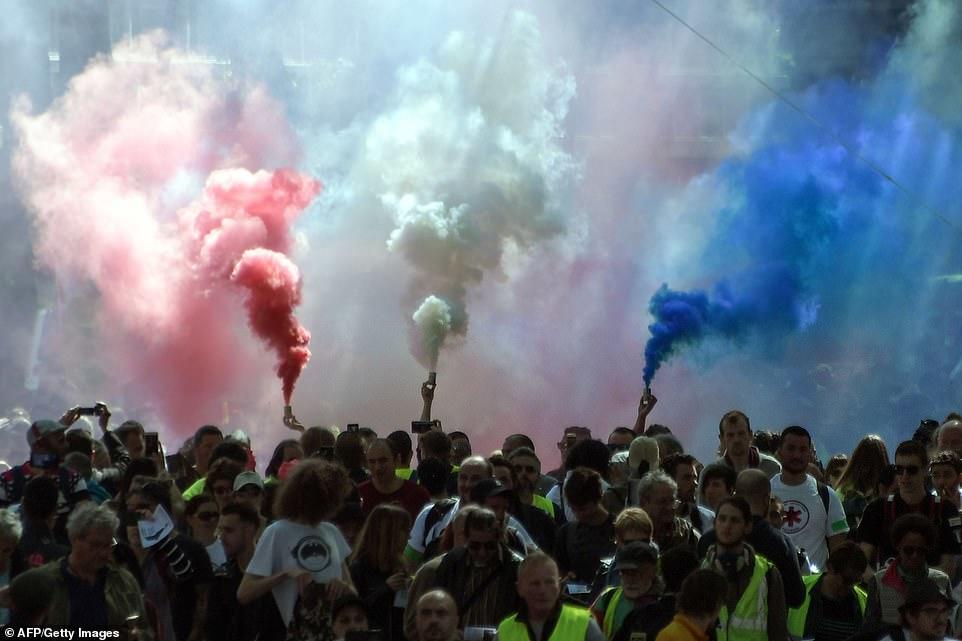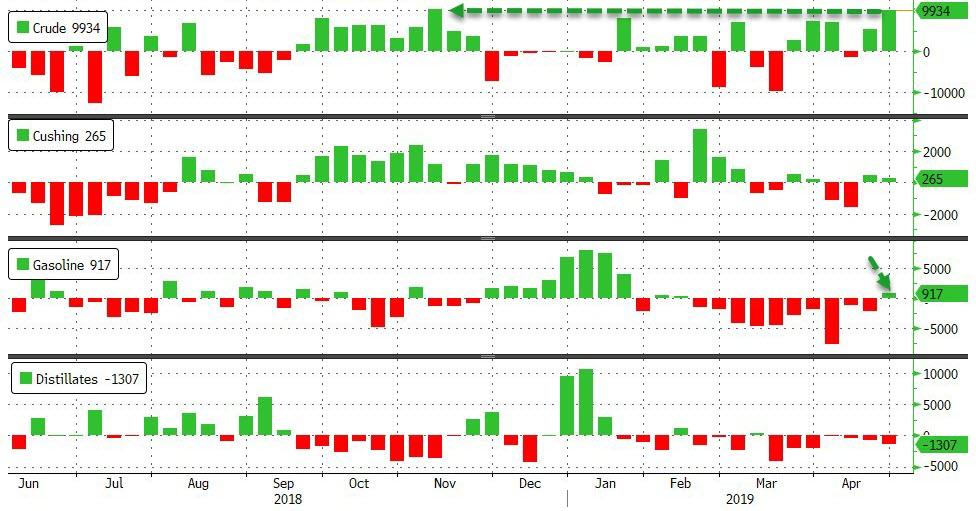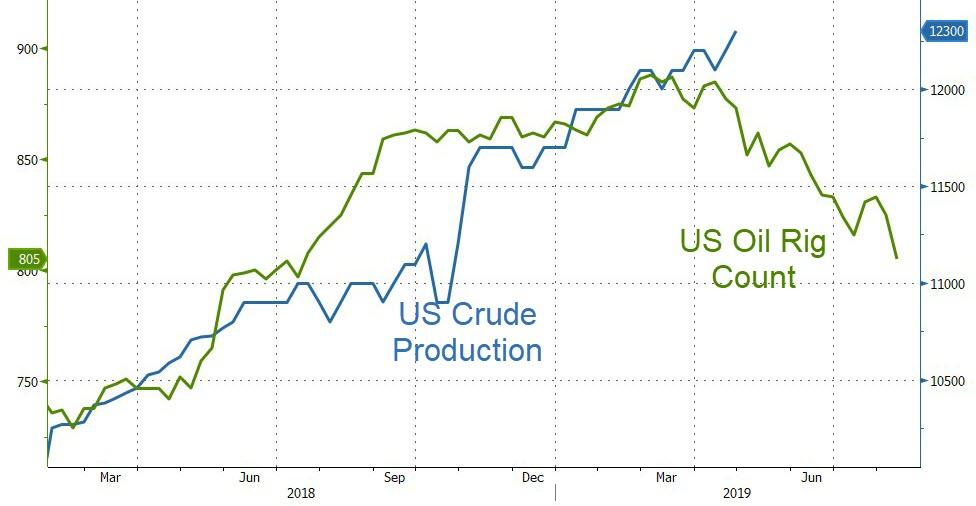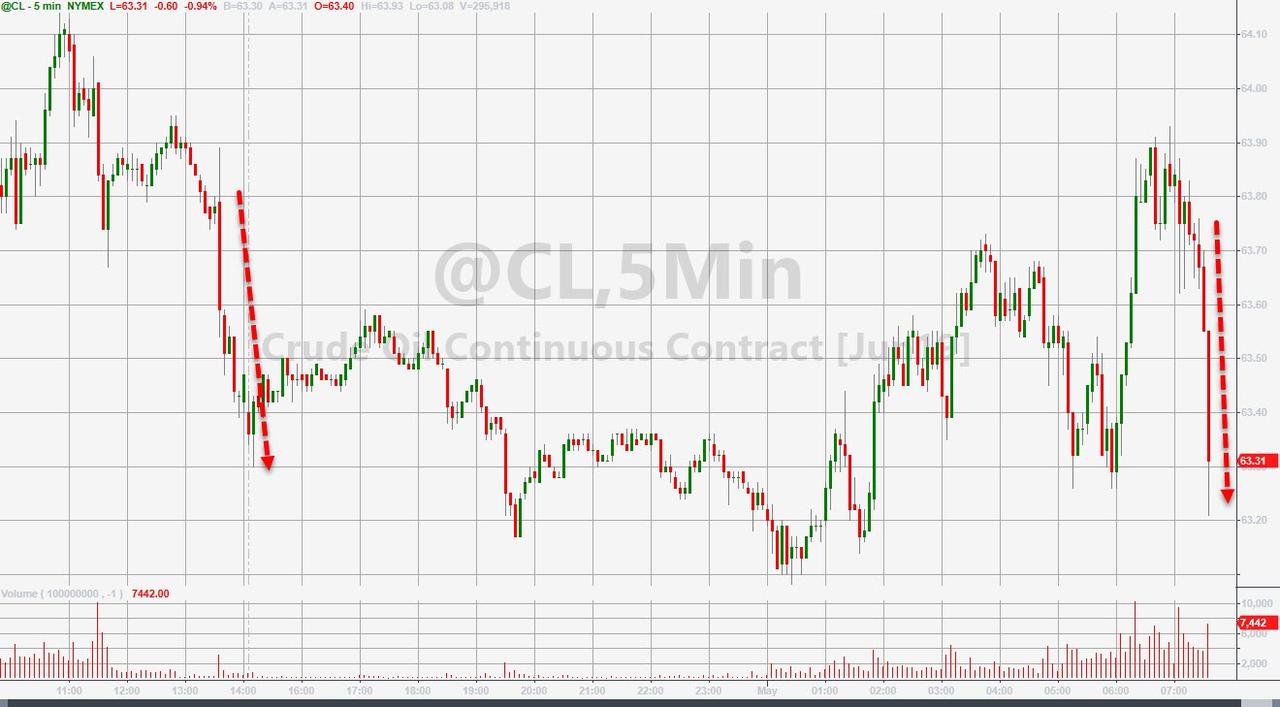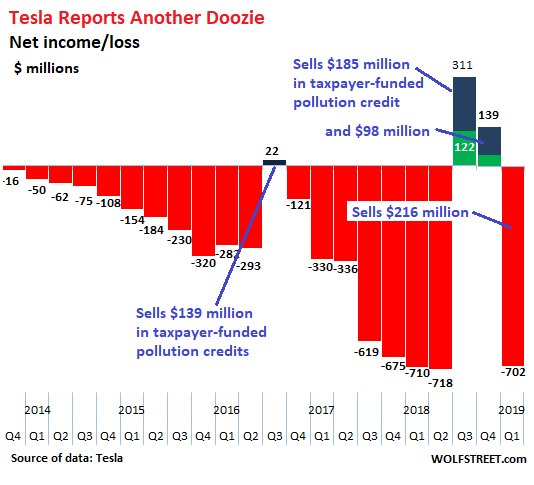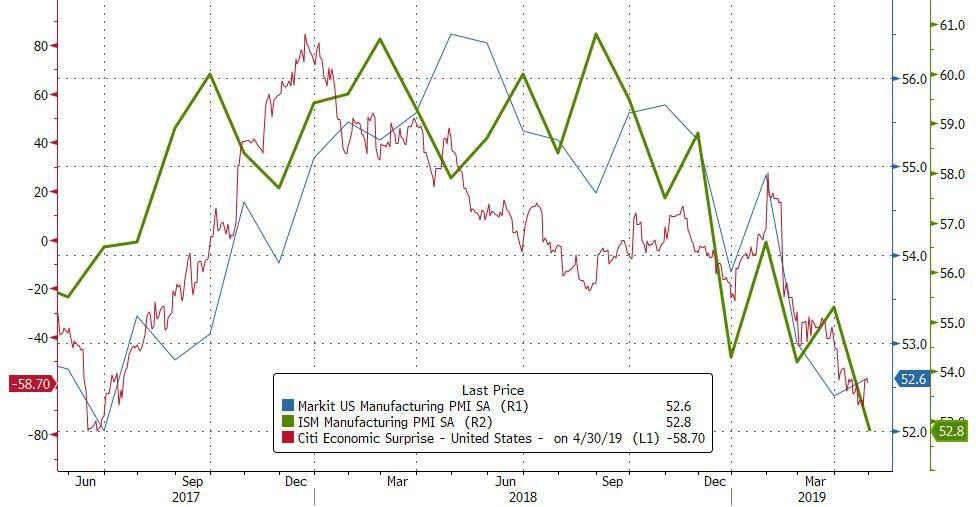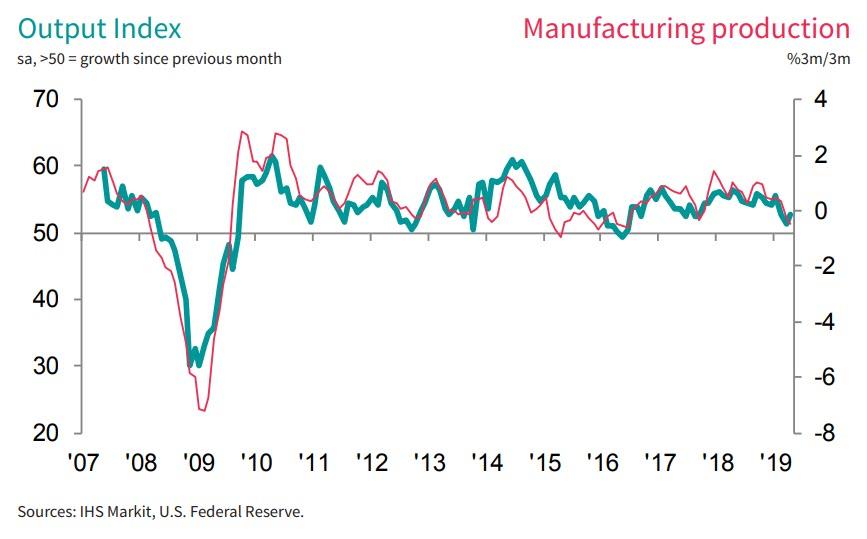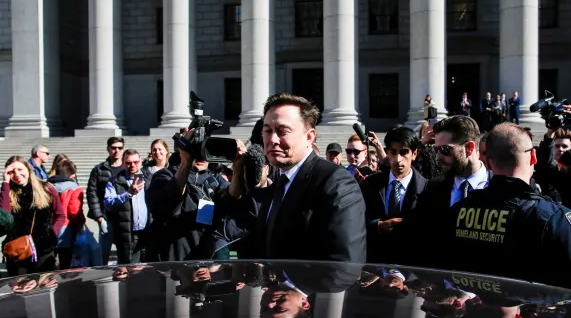Authored by Charles Hugh Smith via OfTwoMinds blog,
It’s the list of workarounds – always growing, never shrinking – that’s telling us the true story of inflation in America.
Today I’m publishing a guest post by writer Bill Rice, Jr., on “real inflation,”which as everyone knows far exceeds the “official” inflation rate of 2%. Bill and I corresponded earlier this year when he was researching and writing his recent article What Does Your Toilet Paper Have to Do With Inflation? Manufacturers have been engaging in “shrinkflation,” leaving consumers paying more for less, but stealthily. (The American Conservative magazine)
Bill’s extensive list of links (50 Dots…) follows his essay. Thank you, Bill, for sharing your insightful research with Of Two Minds readers.
‘Workarounds’ galore: How real Americans deal with ‘real’ inflation By Bill Rice, Jr.
While working on a story on inflation and shrinkflation, I quickly zeroed in on the concept of “workarounds” as an alternative, perhaps superior, way to gauge the true state of our economy. I define workarounds as the changes individuals or families (or businesses) must make in their daily living to adapt to a world of rising prices. If nothing else, these examples, taken in the aggregate, challenge the conventional wisdom that inflation is “low” or “contained,” or that the economy is just fine, thank you.
As decades have passed, the list of workarounds families have utilized to deal with rising prices has rapidly grown.
Women and mothers entering the workforce in massive numbers – the disappearance of families where one income was sufficient to maintain a “constant standard of living” – might be the earliest and most important workaround on my list. Other trends from this expanding list include:
Shoppers switching to less expensive store or private-label brands, families “substituting” hamburger or chicken for steak, buying from “value” menus, couponing, shopping at discount or “dollar” stores more often, buying in bulk to get the lowest unit-cost (think Costco), buying more items at yard sales or from Internet swap meets, “cutting the cord,” cancelling the land line, getting fewer haircuts per year, taking clothes to the dry cleaners less often, cutting out the maid service or paying for it fewer times each month, attending sporting events less often (here, here, here and here), going to the movies less frequently, playing golf or hunting less frequently, dropping out of country clubs and civic clubs, going to the dentist less often, cancelling newspaper and magazine subscriptions …
Cremation instead of burial, casual instead of (more expensive) “business” attire, eliminating or “rationing” prescription medications, moving from high cost-of-living states (or cities) to lower-cost-of-living communities, adult children moving back in with their parents (and aging adults moving in with their grown children), car-pooling and now “car sharing,” the growth of “do-it-yourselfers,” delaying or “reversing” retirement, taking on a part-time job … the list of “workarounds” goes on and on.
Americans have always resorted to workarounds to counter rising prices or help “make ends meet.” However, the list of necessary workarounds has “absolutely” been increasing Ron Paul told me, a trend he said is “going to continue to grow.”
As it always has, the market place has rewarded businesses that helped families save money.
Then again, lower prices do not necessarily equal a higher standard of living, a point made by John Williams, the creator of ShadowStats, the best known “alternative” measure of inflation.
To illustrate the difference between simply compiling prices without taking into account reductions in the quality of goods (or of “buying experiences”), Williams cited the example of his long-time tailor, who eventually had to close his haberdashery as customers fled to the mall and more affordable prices.
Yes, Williams could still buy clothes (in fact for a lower price), but the quality had diminished; so too had the level of service. The experience of acquiring clothes was not as satisfying or memorable. His question: Had he in fact maintained a “constant standard of living” by “substituting” suits from, say, JC Penney for the finer suits and richer experiences he had grown accustomed to?
Walmart assuredly saves consumers money. However, it also helped kill the downtown merchant, and with it our Norman Rockwellish memories of downtown America. “Self serve” killed the neighborhood “full-service” filling station, saving customers 40 cents a gallon on a fill-up, but also taking away our grandmother’s ability to get her tires and oil checked and her windshields cleaned on a regular basis (not to mention eliminating a popular first-time job for many males).
Netflix killed the neighborhood video store. Clothes that don’t require pressing, as well as employers allowing casual attire in the workplace, thinned the ranks of dry cleaners. iTunes largely killed the record store. Craigslist helped kill the (more expensive) newspaper classified section, expediting the slow death of the journalism industry. Barnes & Noble placed the independent book store on the extinction list, before Amazon threatened this same retailer.
Today, Uber is killing the taxi driver. Hulu and streaming video services threaten cable and the TV networks. TD Ameritrade threatens the traditional stock broker. Aldi (with its more affordable private label brands) threatens Kroger. Walmart, once unchallengeable, is today threatened by Amazon and Dollar General. People choosing to make their own turkey sandwich probably contributed to Subway closing more than 1,100 of its stores.
Most of these innovations/trends/changes kept CPI lower than it would have been otherwise, but did they actually allow people to maintain the same “standard of living” they enjoyed in prior years? Some innovations probably did; others probably did the opposite.
And how exactly did families from prior periods of time (often with just one income) afford to pay those full-service gas prices, or trade with the downtown hardware store instead of Home Depot?
Today it’s uncomfortable to think about, but in working on this story, a question I’d never thought about suddenly occurred to me. Namely, how did so many middle and upper-middle class families (families with just one income from the “poor” South) actually afford the full-time domestic “help” depicted in the movie and book of the same title?
Was everyone richer back then? Or is inflation higher today? Or, in “real” terms, is it possible the answer is “both?”
Labeled by Ron Paul as the “cruelest tax,” inflation is not a trivial topic, especially for the poor and those on fixed incomes. Even if people manage to “get by,” their new “standard of living” cannot be described as improved, superior or welcome.
Yes, the “Ten Percent” are doing better than ever, but is this really the case for the bottom 50 or 60 percent? If real standards of living were rising would it be this easy to identify so many “workarounds?”
All of these workarounds and business trends have been noticed. Details have been provided in journalism, academic papers, books and seminars.
What’s missing from much of this coverage is any effort to connect all the dots. That is, for some reason, the elephant in the room is too often ignored. The “elephant?” Practically every trend mentioned above shares one common antecedent – prices that, in the minds of consumers, had become unaffordable.
Perhaps we never pause to add up all the workarounds we are using. We might think about our decision to drop out of the civic club (and save on those membership dues), but we don’t tally up the other 10 changes we made for the exact same reason. If more people did this, inflation might become a bigger political issue than it is.
In fact, this might already be happening. In a country where so many people are forced to employ so many workarounds to make ends meet, politicians of a certain ideological bent might see a grand opportunity. In such a nation, for example, one might see a surge in presidential candidates suddenly espousing more liberal or even socialist “solutions.”
At least at the micro level of the economy, families are increasingly forced to deal with a reality they’ve been told is not a reality. Today’s economic conventional wisdom tells us that rising prices are no big deal. Indeed, we’re told what the economy really needs is more inflation.
But in a country where 46 million Americans rely on charity food banks to supplement their food intake, and 42 million qualify for food stamps, and millions more Americans are forced to max out credit cards to purchase necessities, do we really need higher prices?
Another trend I identified was the proliferation of payday and title loan businesses. Montgomery, AL (population 200,000) has nearly 100 such businesses, according to one city councilman. (By way of comparison, the city has 11 McDonald’s restaurants.)
One council member proposed an ordinance to limit the growth of such “stores.”
“If you see 18 of them on a main thoroughfare going into our city, it makes you think that the people who live around here must be desperate,” he said.
Well… yes. Apparently providing “quick cash” is another workaround created by entrepreneurs to serve (some say exploit) “desperate” people.
In researching this topic, I read dozens of stories on inflation. I also read the Reader Comment sections that followed these stories. As a measure of “Man on the Street” sentiment, these message boards were often more illuminating than the articles proper.
While Fed governors, academics and the business press declare that inflation is “low” and “contained,” real, live Americans are calling BS.
If one is seeking to determine whether inflation is a bigger deal than we are being told, simply read the Reader Comments. And then add up all the changes Americans have been forced to make in their lives to keep up with rising prices.
At least in my opinion, it’s this list of workarounds – always growing, never shrinking – that’s telling us the true story of inflation in America.
Bill Rice, Jr. is a freelance writer in Troy, Alabama. He can be reached at wjricejunior@gmail.com.
Connecting 50 dots…
Do headlines, presented in aggregate, reveal a story that’s not being fully told?
The 50 headlines listed below support the thesis that – perhaps more than ever – families and individuals must adopt “workarounds” to deal with rising prices and an economy that may not be as robust as portrayed in the media. The list is not comprehensive. Others can certainly identify trends or workarounds not immediately identified by the author. (Research by Bill Rice, Jr.)
Women enter workforce…
“Women enter workplace in massive numbers, death of 1-income family” (source)
Private label and store brands…
“Surge in customers buying Private Label brands described as retail ‘revolution’”(source)
Chicken, it’s what’s for dinner…
Chicken vs. Beef Consumption Comparison 1960 to 2018 – Chicken catches, blows past beef (source)
“2014: (Cheaper) Chicken more popular than beef for first time” (source)
Couponing…
“Coupon use (traditional and digital) soars, trend expected to grow” (source)
Shopping at ‘discount’ stores…
“Dollar General now has more stores than McDonald’s” (source)
Buying in bulk…
“Costco crushed it in 2018” (source)
‘Value’ menus…
“Fast food prices are rising, but so are deals” (source)
Yard sales, Swap meets…
“Why an old-school tradition is more popular than ever” (source)
“550 million people visit formal ‘buy-and-sell’ Facebook Groups each month” (source)
Cutting the cord…
“Cord-cutting keeps churning, 33 million people abandon pay TV in 2018” (source)
Cancelling the landline…
“Most households have given up the landline” (source)
Fewer haircuts…
Number of people getting 4 or more haircuts a year declines by 10 million (59 million in 2018 compared to 71.X million (?) in 2011) – Statista chart (source)
Using dry cleaners less often…
“In Illinois: Dry cleaning establishments decline by 50 percent over last 20 years”(source)
Declining attendance at sporting events…
– NFL:
“Empty seats galore at NFL games” (source)
– College Football:
“The Growing Problem of College Football Attendance” (source)
– MLB:
“MLB attendance down 4 percent” (source)
– NASCAR:
“NASCAR, Daytona numbers continue to sag” (source)
Movie theater attendance…
“Domestic movie theater attendance hit 25-year low in 2017” (source)
Golf anyone?…
“Why are we playing less golf?” (source)
Hunting …
“Hunting participation numbers continue to drop – and it’s a sorry situation” (hunters drop from 18 million to 10.5 million) (source)
Country club memberships…
“Money-losing country clubs adapt to changing times” (source)
Civic club memberships…
“Are service clubs dying?” (Rotary memberships decline by 70,000) (source)
Dentist office visits…
“Survey: More Americans want to visit the dentist (but visits drop by 4 percent)(source)
Cancel my subscription…
“Paid circulation at newspapers declines by 11 percent in 2017” (source)
“Time was giving magazines away for free” (source)
Slow death of newspaper industry …
“Newspaper crisis is growing: More than 1 in 5 local newspapers have closed since 2004” (source)
Homeschooling…
“In 16 states studied: Homeschooling grew by 25 percent in 4 years” Note: I deleted this one from story for for space reasons. (source)
Cremation over burial…
“Why is cremation becoming more popular in the U.S.?” (Growth described as ‘astronomical’) (source)
Casual is fine…
“Why Americans now dress so casually?” (source)
Voting with feet, plenty of Americans are moving out…
Cities:
“41 percent of New Yorkers say they are going to leave” (source)
States:
“Why are so many people moving out of the Northeast?” (source)
Rationing or eliminating prescription medications…
“How to pay less for your meds?” (source)
Moving back in with parents (or parents moving in with children)…
“More than 1/3 of young adults live at home (up from 26 percent)” (source)
“Aging adults moving in with children” (source)
Car pooling…
“Car pooling on the rise again?” (source)
And now car sharing…
“The big trends shaping the future of the car-sharing industry” (source)
Do It Yourself (DIY)…
“Why the huge do-it-yourself market is just getting started” (source)
Delaying retirement…
“More than half of 60-somethings say they are delaying retirement” (source)
Reverse retirement…
“Many retirees (one third) are going back to work” (source)
Part-time employment…
“America’s part-time worker problem is permanent, San Francisco Fed says” (source)
“More Americans need a second job to make ends meet” (source)
Making our own sandwich…
“Subway closed 1,100 restaurants in 2017” (also: 500 more in 2018) (source)
Self-serve took Gomer’s job…
“‘They’re like dinosaurs:’ But at least one full-service gas station still exists” (source)
Deflation fears… Wanted: More inflation
“Why is deflation a Central Bank’s worst nightmare?” (source)
Do we really need higher prices?…
“Feeding America serves 46 million people” (source)
“Food Stamp recipients number 42 million in 2017” (source)
“Credit card balances at all-time highs” (source)
Payday, title loan stores proliferate in many states…
“Payday lending has blossomed over past 20 years” (source)
“Number of Americans who took out title loans doubled in recent years” (source)
“Councilmen seek moratorium on payday lenders” (source)
* * *
If you found value in this content, please join me in seeking solutions by becoming a $1/month patron of my work via patreon.com. New benefit for subscribers/patrons: a monthly Q&A where I respond to your questions/topics.
via ZeroHedge News http://bit.ly/2XWdBeb Tyler Durden
